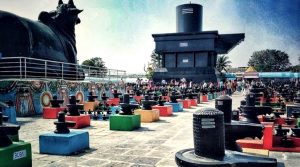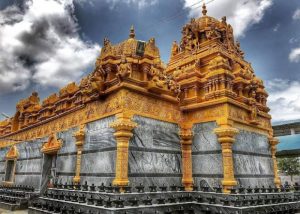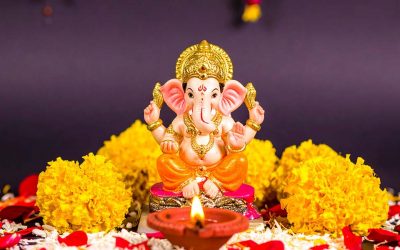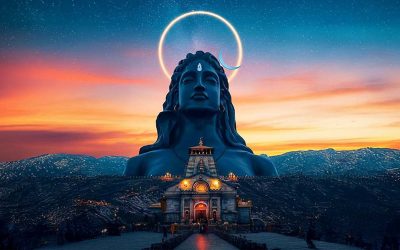History of Kotilingeshwara Temple
Introduction
Nestled in the serene town of Kammasandra, located in the Kolar district of Karnataka, India, the Kotilingeshwara Temple stands as a remarkable testament to devotion, architectural grandeur, and spiritual fervor. This temple, renowned for its impressive number of Shiva lingas, offers a unique and profound experience for devotees and visitors alike. In this exploration, we delve into the temple’s history, significance, architecture, and practical information to enhance your visit.
Historical Background
The Kotilingeshwara Temple, often referred to simply as Kotilingeshwara, has its roots deeply embedded in Hindu religious traditions. The temple is believed to have been established in the late 20th century, with its construction beginning in the 1980s. The temple’s creation is credited to Dr. K. R. Narsimha Rao, a dedicated devotee of Lord Shiva, who envisioned a sacred space that would reflect the divine presence of Shiva in myriad forms.
The inspiration behind the temple is derived from the ancient practice of constructing Shiva lingas, which symbolize the cosmic essence of Lord Shiva. The name “Kotilingeshwara” translates to “the Lord of a Crore Lingas,” reflecting the temple’s ambition to enshrine one crore (ten million) Shiva lingas. This aspiration to create a grand spiritual monument has made Kotilingeshwara Temple a significant pilgrimage site.

Architectural Marvel
The Kotilingeshwara Temple’s architectural design is a visual marvel, showcasing a harmonious blend of traditional South Indian temple architecture with modern elements. The temple complex is expansive, encompassing a large area dotted with thousands of Shiva lingas. The primary deity of the temple is Lord Shiva, whose colossal statue presides over the site.
One of the most striking features of the temple is the central Shiva linga, which stands as the focal point of worship. Surrounding this central linga are numerous smaller lingas, meticulously arranged in rows. The sheer scale of the temple, with its multitude of lingas, creates a mesmerizing sight that evokes a deep sense of awe and reverence.
The temple’s architecture also includes various other shrines dedicated to different deities, reflecting the comprehensive nature of Hindu worship. The structures are adorned with intricate carvings and sculptures that depict various aspects of Hindu mythology, adding to the temple’s aesthetic appeal.
Spiritual Significance
Kotilingeshwara Temple holds immense spiritual significance for devotees of Lord Shiva. The presence of a vast number of Shiva lingas symbolizes the omnipresence and infinite nature of the divine. Devotees believe that offering prayers at Kotilingeshwara and participating in rituals performed here can lead to spiritual growth, fulfillment of wishes, and liberation from worldly troubles.
The temple’s unique feature of having a large number of lingas is also believed to magnify the potency of prayers and offerings. Each linga represents a manifestation of Lord Shiva, and the cumulative effect of these lingas is considered to amplify the divine energy present in the temple.
Festivals and Celebrations
Kotilingeshwara Temple is a vibrant center of religious and cultural activities, with several festivals celebrated throughout the year. Major festivals include:
- Maha Shivaratri: This is the most significant festival at Kotilingeshwara Temple, celebrated with great fervor. Maha Shivaratri, the “Great Night of Shiva,” involves an all-night vigil, chanting of hymns, and special rituals dedicated to Lord Shiva. The temple attracts thousands of devotees during this festival, who come to offer their prayers and seek blessings.
- Shivaratri: Apart from Maha Shivaratri, the temple also celebrates other Shivaratris with considerable enthusiasm. These events typically involve special pujas, processions, and offerings to Lord Shiva.
- Navaratri: This nine-night festival dedicated to the goddess Durga is also observed at the temple. Although Kotilingeshwara is primarily a Shiva temple, the celebration of Navaratri reflects the inclusive nature of Hindu worship.
Timings and Visitor Information
The Kotilingeshwara Temple is open to visitors every day of the week. The general timings for the temple are as follows:
- Morning: 6:00 AM to 12:00 PM
- Afternoon: 4:00 PM to 8:00 PM
These timings may vary slightly depending on the day and any special events or festivals taking place. It is advisable to check the temple’s official website or contact local authorities for the most accurate and updated information before planning your visit.
How to Reach Kotilingeshwara Temple
 Kotilingeshwara Temple is well-connected to major cities in Karnataka, making it accessible for both local and outstation visitors. The temple is approximately 100 kilometers from Bangalore, the capital city of Karnataka. There are several transportation options available:
Kotilingeshwara Temple is well-connected to major cities in Karnataka, making it accessible for both local and outstation visitors. The temple is approximately 100 kilometers from Bangalore, the capital city of Karnataka. There are several transportation options available:
- By Road: Private taxis, rental cars, and state-run buses operate regularly between Bangalore and Kotilingeshwara. The drive from Bangalore takes around two to three hours.
- By Train: The nearest railway station to Kotilingeshwara Temple is Kolar, which is well-connected to Bangalore and other major cities. From Kolar, visitors can take a taxi or bus to reach the temple.
- By Air: The nearest airport is Kempegowda International Airport in Bangalore. From the airport, visitors can hire a taxi or use public transport to reach Kotilingeshwara.
Accommodation
While the temple itself does not offer accommodation, there are several lodging options available in and around Kolar. Visitors can choose from budget hotels, guesthouses, and lodges depending on their preferences and budget. For those seeking more comfort, Bangalore offers a wide range of accommodation options, with convenient transportation links to Kotilingeshwara.
Conclusion
The Kotilingeshwara Temple is more than just a place of worship; it is a profound spiritual journey encapsulated in stone and faith. Its grand collection of Shiva lingas, awe-inspiring architecture, and the serene atmosphere make it a must-visit destination for anyone seeking a deeper connection with the divine. Whether you are a devoted Hindu or a curious traveler, the temple offers a unique and enriching experience that resonates long after your visit.






